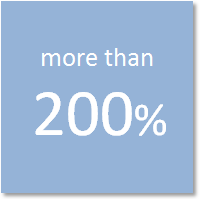China, India & Colombia’s Interbolsa
Colombian firm Interbolsa is being liquidated in a move to protect the interests of Colombia’s financial markets.
This article is the first in a four-part series on Chinese mining engagement in Latin America, which coincides with the launch of a new report authored by Iacob Koch-Weser. Koch-Weser’s report provides the first-ever, comprehensive overview of recent findings on China’s mining activity in the region. It is the product of an extensive review of recent Chinese, English, Spanish and Portuguese literature on China’s overseas mining, and incorporates findings from a recently convened Dialogue working group meeting on the topic.
Over the past decade, China has rapidly emerged as the world’s leading consumer and importer of minerals. China’s overseas mining activity also surged during this period, motivated by numerous factors – including profit, Beijing’s concerns about resource security, diplomatic interests, and often state-supported efforts to internationalize Chinese firms. For the first post of this series we are pleased to provide a “by the numbers” breakdown of China’s overseas mining engagement, derived from Koch-Weser’s findings and China and Latin America Working Group deliberations.

China accounted for nearly half of worldwide metals consumption in 2012, including 48 percent of total primary aluminum, 34 percent of total crude steel and 43 percent of total refined copper. The country accounts for over 70 percent of global demand growth for key mineral resources over the past decade.
 hina’s share of global rare earths production
hina’s share of global rare earths productionA crucial component of many high-tech goods, rare earth elements (REE’s) are considered a strategically important resource by the US government. China declared export restrictions on REE’s in 2012, forcing many foreign companies to relocate facilities to inside its borders.

Iron ore imports have climbed from less than 200 million tons to more than 600 million tons since 2000, with some projections estimating that China will import record 930 million tons in 2014. Copper imports have more than quadrupled from 20 thousand to 80 thousand tons per year since 2000. China became a net importer of coal in 2007.
 Increase in key global metals and minerals prices
Increase in key global metals and minerals pricesGrowing Chinese consumption is widely believed to contribute to global price increases for iron, copper and coal. But rising demand does not always lead to massive price increases, as is typically assumed.
 Chinese mining investment bound for Latin America
Chinese mining investment bound for Latin AmericaWhile Chinese mining projects remain concentrated in Asia, ventures have diversified substantially. Chinese FDI in Latin America’s mining sector peaked in 2007 at 9.4 billion dollars, while 2013 registered a total of 468.3 million dollars. The region now accounts for 10 percent of China’s global mining investments by value and 12 percent by volume.
 Share of total Chinese LAC investments in copper
Share of total Chinese LAC investments in copperCopper accounts for more than half of China’s total investments in Latin America and iron accounts for about 32 percent. Most investments are concentrated in South American countries, including Brazil, Chile and Peru.
 Percent of Chinese ventures in LAC controlled by private firms
Percent of Chinese ventures in LAC controlled by private firmsAlthough state-owned enterprises (SOE’s) still account for more than half of China’s total mining investment in the region by value, they control only a handful of projects – 9 out of 69 total in the region. An influx of small private Chinese investors is reducing the average mining deal size. In the first three quarters of 2013, privately-owned companies invested US $1.9 billion in overseas mines compared with $1.2 billion for SOE’s.
Colombian firm Interbolsa is being liquidated in a move to protect the interests of Colombia’s financial markets.
What is the state of Peru-China commercial ties today?
Protests in Brazil are currently the focus of discussion and debate within Chinese government institutions.